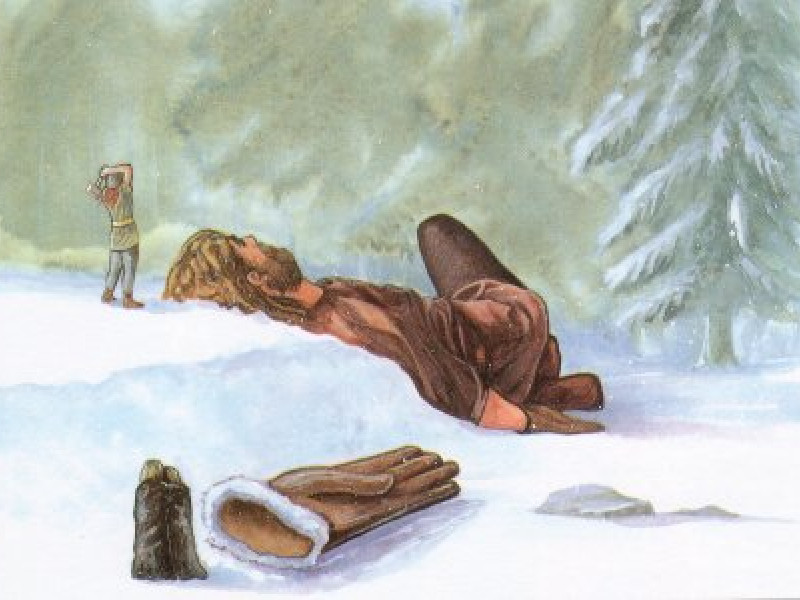Giant of Clay
Odin encountered the giant Hrungnir at Griotunagardar (frontier of Giantland), where he told the frost-giant there was no better horse in Giantland than his own (Sleipnir). Angry at this challenge, Hrungnir pursued Odin on his own horse Gullfaxi.
When he arrived in Asgard, the Aesir welcomed him, with Freyja serving him the same ale that Thor usually drank. As Hrungnir became drunk, he was boasting and becoming more hostile. Hrungnir told the Aesir that he would move Valhalla to Jötunheim, and destroy Asgard and the gods. However, he would keep Freyja and Sif as his concubines.
Thor arrived and challenged Hrungnir to fight him. Hrungnir agreed, only if Thor met him at Griotunagardar, since he had not brought a weapon with him.
At Griotunagardar, the giants did not like the prospect of Hrungnir losing the fight to Thor, so they created a giant made of clay which they called Mokkurkalfi. This clay-giant stood nine leagues tall and three leagues wide, and it had the heart of a large mare.
Hrungnir had a heart of stone. His head was also made of stone. The giant had a shield of stone and a large whetstone as a weapon.
Thor saw Mokkurkalfi standing beside Hrungnir. However, instead of frightening Thor, the sight of Thor caused the clay-giant to feel enough fear to wet himself. Thor came with his servant named Thialfi, who ran ahead to speak with Hrungnir.
Thialfi deceived Hrungnir that Thor was coming towards him from an underground route to attack the giant from below. Hrungnir believed Thialfi, so he placed his shield on the ground and stood on top of it.
Thor charged across the plain and threw Mjollnir at Hrungnir. At the same time the giant hurled his whetstone at the thunder-god. Mjollnir broke the whetstone in two. Half of it landed on the ground; the other half struck and lodged itself in Thor's head. Thor fell to the ground at the impact of the whetstone.
The Mjollnir continued its flight and shattered Hrungnir's stone head. Hrungnir fell dead and landed on top of Thor. The giant's legs broke off from his body, the legs pinning Thor's neck to the ground. Thialfi easily despatched Mokkurkalfi.
Thor had trouble getting the Hrungnir's heavy legs off him. Thialfi tried to move the legs off, but couldn't budge them. None of the Aesir who arrived could help Thor until Magni, the three-year-old son of Thor and the giantess Jarnsaxa, arrived and removed the legs from Thor. Thor rewarded his son by giving Hrungnir's horse (Gullfaxi) to Magni.
Thor returned to Thrudvangar to have the whetstone removed from his head by the sorceress Groa, wife of Aurvandil the Bold. Aurvandil the Bold had been riding in a basket which Thor was carrying, when the god waded through the river Elivager in Giantland. Since one of Aurvandil's feet was sticking out of the basket, one toe got frozen. Thor broke off Aurvandil's toe and threw it into the sky, where it became a star called Aurvandil's Toe. But Thor distracted Groa with this tiding, during her spell, so that the whetstone remained in his head.
By Jimmy Joe




